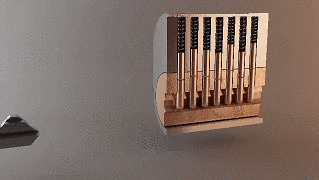When it comes to drilling into tough materials like concrete, brick, and stone, a hammer drill is your go-to tool. Unlike standard drills, hammer drills combine rotational drilling with a hammering action, making them perfect for demanding tasks. Whether you’re tackling a home improvement project or working on a construction site, mastering the use of a hammer drill can make all the difference.

What can you accomplish with a hammer drill?
Hammer drills are designed to tackle hard surfaces such as concrete, masonry, and stone. The hammering action assists in breaking up the material while the bit rotates, making the drilling process faster and more efficient. This makes hammer drills indispensable for tasks like setting anchors, drilling holes for rebar, or mounting fixtures on concrete walls. They’re also essential for projects requiring precision drilling, such as installing geotextile fabric in retaining wall projects.
How does a hammer drill differ from a regular drill?
The key difference between a hammer drill and a regular drill is the hammering function. While a regular drill only rotates the bit, a hammer drill adds a rapid hammering motion to the rotation, allowing it to penetrate much harder materials. Many hammer drills also come with a switch that turns off the hammering function, enabling the tool to operate as a standard drill when needed.
Can a hammer drill be used for woodworking?
While hammer drills are engineered for hard materials, they can be used for woodworking by turning off the hammer function. However, it’s generally not recommended to use a hammer drill on wood unless necessary, as the tool’s power can be overwhelming for softer materials. If your project involves both wood and masonry, such as constructing a retaining wall with geotextile fabric, a hammer drill with a switchable function can be very convenient.
What safety precautions should be taken when using a hammer drill?
Safety is paramount when using a hammer drill due to the power and potential hazards involved. Always wear safety goggles to protect your eyes from debris, and use ear protection to mitigate the noise. Ensure your workpiece is securely clamped to prevent movement during drilling. Hold the drill with both hands to maintain control, and use the appropriate bit for the material you’re working on. If your project involves drilling near retaining walls with geotextile, be cautious not to damage the fabric or the structure.
In conclusion, a hammer drill is a versatile and powerful tool that excels in drilling through tough materials like concrete and stone. Its combination of rotational and hammering action makes it ideal for heavy-duty projects. Whether you’re working on masonry for a retaining wall project involving geotextile fabric or tackling other challenging tasks, mastering the use of a hammer drill will lead to professional-grade results.